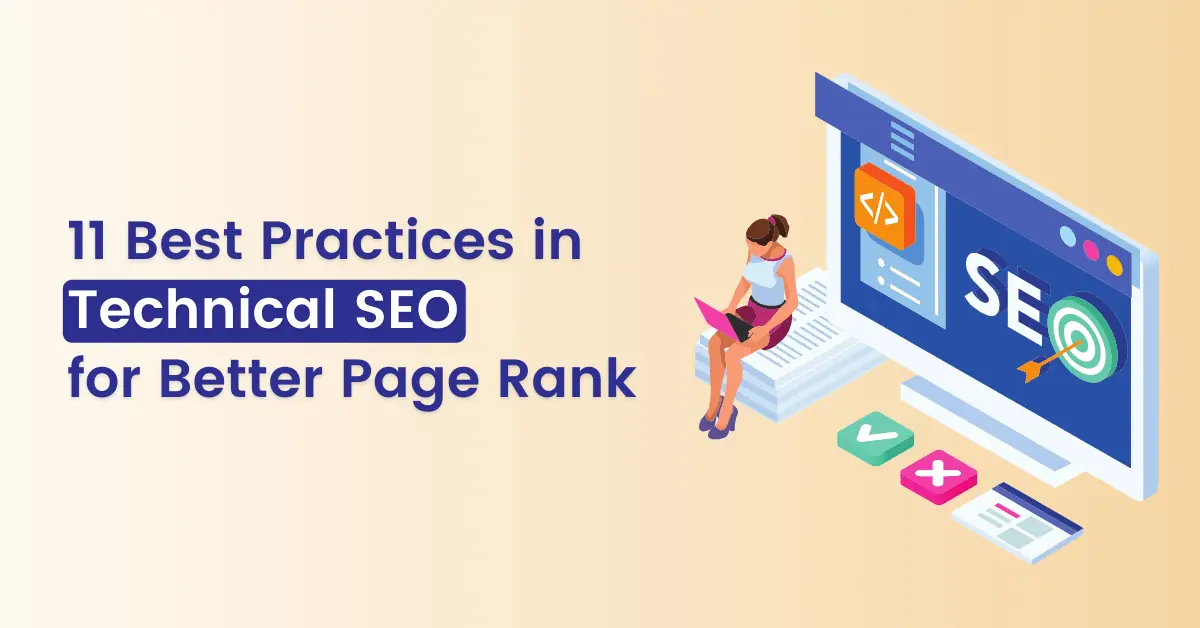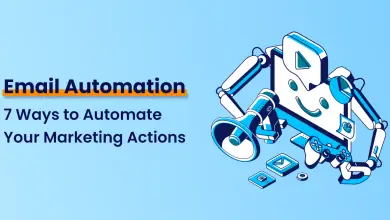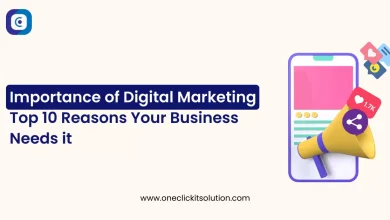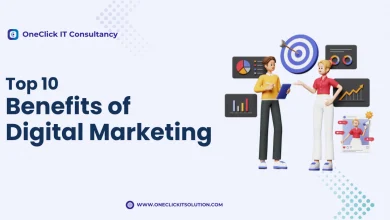11 Best Practices in Technical SEO for Better Page Rank

Introduction of Technical SEO
Technical SEO is the backbone of your website, all your efforts would go fruitless if technical SEO is not done right. It is crucial to understand the challenges of Technical SEO and then to carry out a precise verification of all the points. The good news is that once you have squared Technical SEO on your business website, you will hardly have to worry about it.
Start from the following principle – Great Technical SEO is paying attention to detail.
With this article, learn what Technical SEO is, what are the best practices to follow, and how to diagnose your website by using our checklist:

1. Optimize Your robots.txt
One of the most important elements of Technical SEO is the optimization of the XML sitemap. A sitemap is a file (in XML format) that lists all the pages available on your website. This list includes the URL, the title, the publication date, and the date of the last update.
With a good sitemap, you make it easier for search engine robots to crawl your website. SEO and digital marketing service experts talk about optimizing Google Crawl which is relatively simple. Keep only pages important to your website in your sitemap.
- In general, include only categories, pages and articles in your sitemap.
- Avoid labels, author archives, and other unnecessary data. Avoid duplicate content.
- Next, make sure your sitemap updates automatically when new content is posted or updated.
- Finally, submit it to Google on your Google Search Console and Bing on their tools for webmasters.
2. Fine-Tune the Navigation and Tree Structure of Your Website
The tree structure of your website is a very important criterion for Technical SEO. Your visitors will stay longer on your website if they access all of your content in a few clicks. An ideal scenario is when a user is able to access all your content in 3 clicks.
In addition, this will also help search engines to better understand the purpose of your site and to index its content more easily. The most common mistake is to focus on optimizing the website to get more conversions. Most businesses forget to work on on-site navigation and tree structure. This is harmful to SEO, therefore to the acquisition of traffic which is upstream of the conversion.
For example, make sure your archive pages are public and avoid placing all of your content in one category. Indeed, category pages like archive pages participate positively in the referencing of your site.
Google confirms that it takes into account the global tree structure of a website to classify each of your web pages. This is a point not to be overlooked.
3. Add a Breadcrumb
A breadcrumb is a set of links at the top or bottom of a page that has 2 objectives:
- Facilitate navigation for users on your website without having to press the “Back” button on their browser
- Give search engines an additional clue to the tree structure of your website
In fact, the breadcrumb is also one of the 200 criteria of the Google algorithm.
4. Configure Structured Data
Google uses structured data to understand the content of your pages. In its search results, this increases the click-through rate. It is, therefore, an effective way to be ranked higher by Google. This will also help to receive more traffic on your website.
5. Check Your Canonical URLs
Suppose you have a page that is accessible from multiple URLs. The “canonical” tag tells Google the preferred URL. Thus, you tell Google that it is the same content and that the other URLs are synonyms. This is essential to avoid the duplication of content that Google penalizes.
Here are some usage examples:
- Several pages with similar content
- The pagination pages
- And if you re-publish your content on LinkedIn or on another site
6. Migrate Under HTTPS to Secure Your Website
To win new customers, you need to build trust. One way on the Internet is to make your website safer. This is the objective of the HTTPS protocol and an SSL certificate. Previously, HTTPS was essential only for payment pages, especially on online sales sites.
Today, any website must be secured with its own SSL certificate. In this way, all information transferred between your website and your server (such as usernames, passwords, personal data, etc.) is encrypted and therefore protected. This has even almost become a requirement of Google. Chrome even clearly indicates that your site is not secure in the search bar.
7. Speed Up the Loading Time of Your Website Pages
The slower a site, the higher the bounce rate. This means that Internet users leave your site without consulting another page. However, Google mentions the importance of speed in all their recommendations on Organic Search Engine Optimization (SEO). In addition, many studies confirm that faster websites convert better than slower websites.
Start by estimating the loading time using the Google Speed Insights page, GTmetrics or Google’s mobile testing tool. These tools give you some recommendations to change to speed up the loading time of your web pages. It is often very technical and e recommends that you use a developer.
8. Make Your Site Compatible with the Google Mobile-First Index
Having a website suitable for small screens on mobile is no longer an option. A significant part of your visitors probably already check your website on their mobile. In addition, with the transition to the Google Mobile-First Index, if you do not have a compatible mobile site with all your content, your positions in Google may drop rapidly.
First, check the usability of your website with a free tool from Google. If your website does not pass the test, this should be your first priority after checking that your site is well under the HTTPS protocol.
Read More: 7 Effective SEO Lead Generation Techniques
Then, if it passes the test, here is what you have to check:
- Content on mobile must have the same content as on the computer. It is a condition of the Google Mobile-First Index
- Your mobile website should load in less than 6 seconds over a 3G connection.
- Avoid using pop-up windows on mobile
9. Adopt the AMP Format for Your Pages
The “Accelerated Mobile Pages” (AMP) format is a concept introduced by Google to make the mobile web faster. Quite simply, with the AMP format, you have a version of your website with a light version of the HTML format.
Once the AMP pages of your website are created, they are stored and distributed to users via a special Google cache which loads your mobile pages almost instantly.
The advantages of AMP are:
- Having extremely fast pages on mobile
- Increase the click-through rate on mobile
On the other hand, you will surely have to call on your developer to have an AMP version of your website.
10. Optimize Your Pagination Pages
Pagination is used to split a page into several, such as in category pages. To avoid duplicate content issues and consolidate links and page ranking to your main page, you need to add attributes in the pagination link tags. Thus, you indicate to the search engines that page 2,3,4 is the continuity of page 1. When Google finds the rel = “next” and rel = “prev” link attributes in the code, it understands the main page and uses it for indexing.
11. Fix Your Broken Links and Redirects
Correcting links or bad redirect errors may seem obvious. However, it is very common that we find this type of error. Addressing these issues will improve Google’s crawling of your site and thus speed it up. Most importantly, it will improve the experience of your visitors.
Channel redirects are really to be avoided. Redirects are not bad, but avoid too many redirects in a row. It irritates the engines. Avoid having 3 or more channel redirects.
Orphan pages: An orphan page is a page that has no link to it within your site. It does not take advantage of your popularity. Adding a link to such a page will make it accessible to your visitors, and to search engines

Conclusion
The more you optimize all these aspects, the better your SEO score will be. It is a technical and time-consuming process. If you do not have the internal expertise to carry out this type of audit on a regular basis, consider outsourcing. OneClick IT Consultancy is recognized as one of the best digital marketing company in USA and India.
Our digital marketing experts can help you with all aspects of the technical SEO process. It is essential for your site to deliver its full potential. Once the technical parameters of SEO are set up, you no longer have to worry about it, unlike On-page and Off-page which are perpetual tasks.





